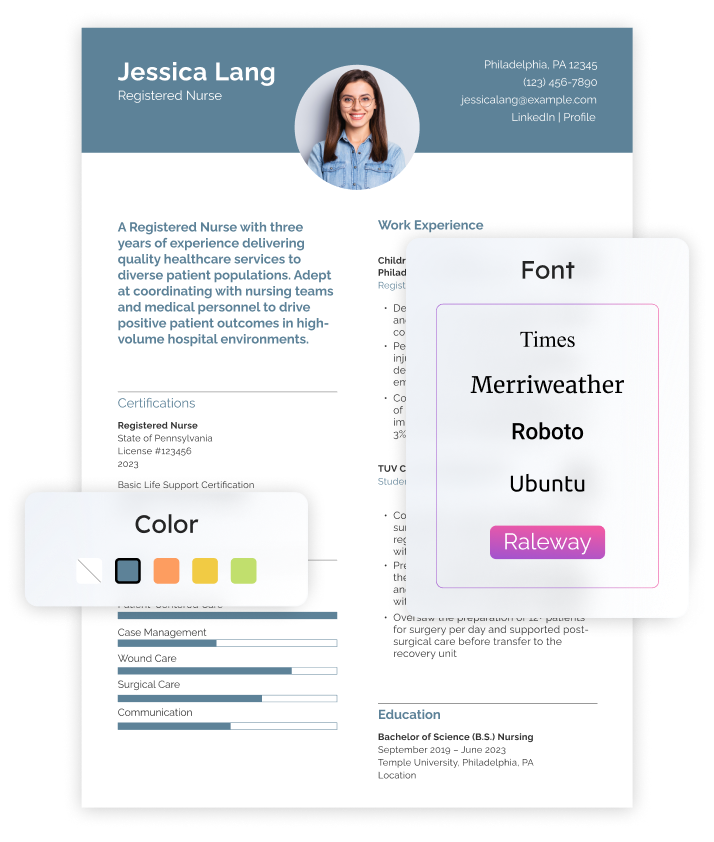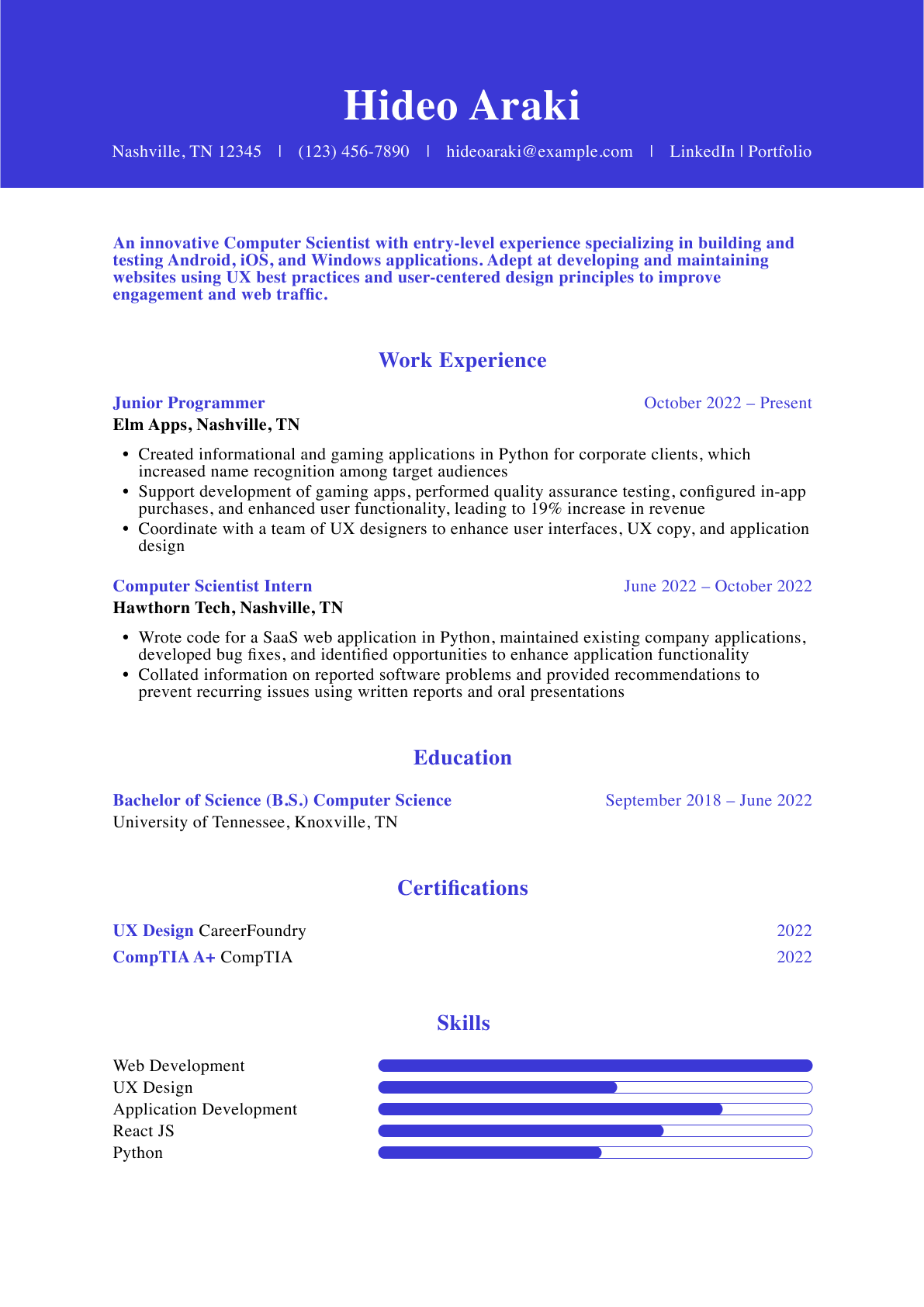Reentering the workforce after several years of unemployment can be extremely difficult for job seekers. There are several reasons and factors for why you might have a lengthy gap in your document. Perhaps you had to take time off from your job to care for your children or faced an important medical or personal crisis.
Although crafting a resume after years of unemployment isn’t easy, many ways to build an effective document can jumpstart your career and reenter the workforce. The key to creating a compelling resume is leveraging your past achievements and current skill sets and showcasing how they align with the needs of the organization you’re applying to. We’ll provide insights to help you craft your resume and reignite your professional career.
How To Write a Resume When You Haven’t Worked in Years
The first step in this process is to leverage your past work experience, no matter how dated it may be. Hiring managers will be most interested in seeing skills and achievements from your previous employment history that match what the company is looking for in a candidate.
Although it may be challenging to generate numbers and metrics in this circumstance, craft compelling bullet points that provide insights into your most compelling career experience. If you want to start a career in a new industry, focus on skill sets and transferable accomplishments across fields.
List Volunteer Experience, Associations, and Independent Projects
Using volunteer experience, associations, and independent projects can help fill in some gaps in your timeline on the resume. However, these might not always seem relevant to the position you’re pursuing. Suppose you were coordinating a significant home renovation and interfacing with contractors. In that case, you may be able to display this as a way of demonstrating project management skills.
Volunteerism experience can also enhance the strength of this application. It will show that although you weren’t employed, you devoted much of your free time to helping others within your community. This will speak to who you are as an individual and provide some insights into what you were doing during your employment gap.
Another option is to feature associations you were a part of on your resume. For instance, if you served on a school board or a local community association, you might use these experiences to draw attention to your leadership, communication, and administrative skills on your resume. Although these details may not be directly related to your target industry, they’re better than having nothing to address the timeline gap.
Build Your Skills Section
Because you haven’t held a job in several years, you’ll use your existing skill sets to your advantage during the application process. A strong resume skills section highlighting your relevant qualifications will help show hiring managers that you have the necessary experience to succeed despite the employment gap.
Focus on integrating keywords and skills that match the job description, as this will also ensure that your document is fully optimized for Applicant Tracking Systems (ATS).
Should You Provide a Direct Explanation for the Gap on the Resume?
Although you might think you should explain the job gap at the top of your document, this is often the wrong strategy for reentering the workforce. Opening your resume with an explanation of why you’ve been unemployed will draw attention away from your relevant qualifications.
Emphasize the positive aspects of your background and skill sets rather than opening up with a reason for your lack of employment. The gap will be visible to the reader, but you can explain it much better during the interview.
That said, if you want to provide an explanation for the gap on your resume, you can create a separate section to address it further down on your document. The key here is to avoid leading with this explanation, as this is a poor strategy for crafting a compelling personal brand on your resume. You can visit our guide explaining resume gaps for more information on this topic.
Consider Furthering Your Education
Although this may not be an option for everyone, given the financial requirements, continuing your education can be helpful when attempting to reenter the workforce. Even showing that you’re pursuing a degree will showcase your commitment to furthering your career and growing within your industry. In this instance, you could also list an expected graduation date based on the number of credits you plan to complete each year.
Obtain New Industry Certifications
Another potential option is to obtain new industry certifications within your field. This will show prospective employers that you’ve stayed active within your space despite the employment gap. It will also demonstrate your familiarity with current industry standards, skill sets, and concepts. Depending on your field, completing these certifications may also require less financial and time commitment.
Utilize Referrals During the Job Search
If you have a significant employment gap on your resume, leveraging your referrals can go a long way in helping you make a positive impression on the hiring manager. Having a past employer or industry connection vouch for you can alleviate some of the concerns associated with your lack of employment history in recent years. Be sure to gather your referrals before you start the application process, as you may need them during your job search.
How To Explain Employment Gaps During the Interview
It’s important to be honest and candid when explaining a gap in your work history during the interview. Hiring managers will appreciate a straightforward explanation, which may help alleviate some concerns and narratives that could develop if you provide a vague answer. Employers are much more understanding of employment gaps than you might believe, and providing a clear explanation might help them relate to your circumstances.
That said, avoid focusing only on the negative aspects of why you were unemployed to remain poised and confident throughout the interview.
Build Your LinkedIn Profile
Creating your LinkedIn profile can be a powerful tool to help you reenter the workforce when you haven’t worked in years. Putting a strong About section at the top of your profile allows you to provide additional insights into who you are personally and professionally using less formal language than you would typically use on a resume.
LinkedIn will also allow you to network with industry professionals and thought leaders within your space, which may help uncover opportunities and obtain new referrals.
Don’t Get Discouraged During the Job Hunt
It’s easy to get discouraged during the job search following a rejection. There are many reasons that candidates are passed over for job roles and that finding the right opportunity will take time due to the employment gap. It’s important to remain patient and diligent during the application process. If you persevere, the right opportunity will present itself, and you’ll reignite your career.
Craft your perfect resume in minutes
Get 2x more interviews with Resume Builder. Access Pro Plan features for a limited time!
Frequently Asked Questions (FAQs)
How do I format my resume if I haven’t worked in years?-
If you have a significant employment gap, consider using a functional or combination resume format instead of the traditional chronological format. This allows you to highlight your skills, volunteer experience, and independent projects rather than emphasizing your work history.
Should I address my employment gap directly on my resume?+
It’s not always necessary to explain the gap directly on your resume. Instead, focus on showcasing your skills and experience. If you choose to address it, you can add a brief explanation in a separate section or in your cover letter. The interview is typically a better place to discuss employment gaps in more detail.
What should I include in my resume if I don’t have recent work experience?+
You can include:
- Volunteer work
- Freelance or contract projects
- Certifications and training courses
- Industry-related projects
- Membership in professional organizations
- Education and skill-building activities
How can I make my resume stand out despite my work gap?+
To make your resume more competitive:
- Use a strong summary statement that highlights your key skills and career goals.
- Focus on transferable skills relevant to the job.
- Incorporate keywords from the job description to optimize for ATS (Applicant Tracking Systems).
- Quantify achievements when possible, even from volunteer or freelance work.
Can I include volunteer work as experience on my resume?+
Yes! Volunteer experience can demonstrate leadership, project management, teamwork, and other valuable skills. If your volunteer work is relevant to the job you’re applying for, list it in your experience section just like a regular job.
Should I take courses or get certifications to improve my resume?+
Yes, upskilling can help fill gaps and show employers that you are proactive about career development. Online platforms like Coursera, LinkedIn Learning, and Udemy offer industry-specific courses and certifications that can boost your credibility.




